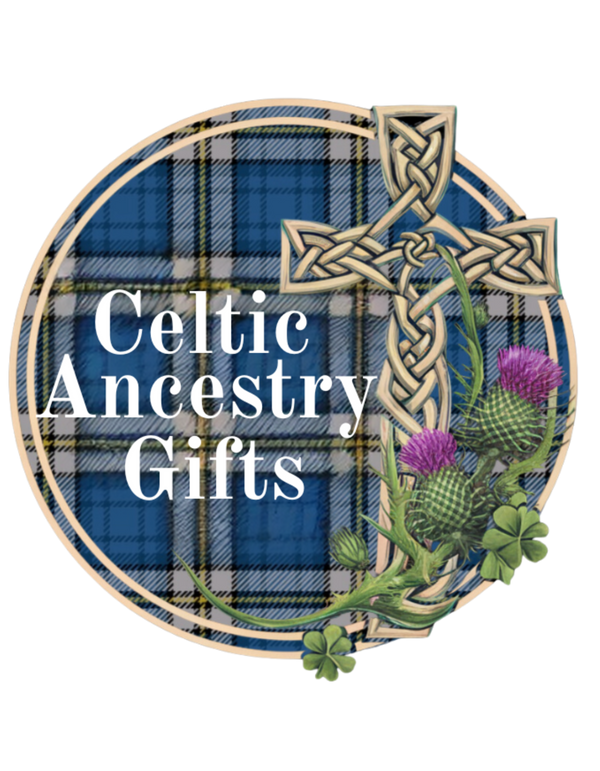
St. Patrick's Day: A Comprehensive Exploration of its History, Origins, and Global Celebrations in 2025
Share
A Deep Dive into the History and Origins of St. Patrick's Day
St. Patrick's Day, observed annually on March 17th, transcends its origins as a simple religious holiday. It has evolved into a globally recognized celebration, a vibrant tapestry woven with threads of history, faith, cultural identity, and enduring traditions. While often associated with jovial imagery like leprechauns and pots of gold, the day's true narrative is far richer and more complex, deeply rooted in the historical and cultural exchange between Ireland, Scotland, and the wider world. This exploration delves into the historical figure of St. Patrick, the evolution of the holiday's celebrations, the significant Scottish-Irish connections, and the diverse ways St. Patrick's Day is celebrated across the globe in 2025.
Unraveling the Enigma of St. Patrick: Fact and Legend
The historical figure of St. Patrick remains somewhat elusive, shrouded in a blend of historical accounts and legendary embellishments. Born in Roman Britain in the late 4th century (the exact year remains debated), his life took a dramatic turn when he was captured by Irish raiders at the age of sixteen. He spent six years as a slave in Ireland, an experience that profoundly shaped his religious awakening. Accounts suggest a profound spiritual conversion during this period of hardship. Eventually escaping, he returned to Ireland not as a conqueror, but as a missionary. His primary focus was on the conversion of the pagan Irish population to Christianity.
The details of his missionary work are equally fascinating, demonstrating considerable success in converting many to Christianity. He is credited with establishing numerous churches and monasteries across the island, thereby fundamentally changing the religious landscape of Ireland. While the precise details are subject to historical interpretation, it's undisputed that his mission had a transformative impact on Irish society, influencing culture, language, and governance. Although the date of his death remains a subject of scholarly debate, March 17th has been traditionally associated with his passing, marking the origin of the religious observance of St. Patrick's Day.
From Solemn Observance to Global Spectacle: The Evolution of a Tradition
The early celebrations of St. Patrick's Day were primarily solemn religious observances. They served as a time for prayer, reflection, and commemoration of St. Patrick's life and his transformative influence on Ireland. However, as centuries passed, the holiday evolved, organically incorporating elements of Irish culture and national identity. The transition from a primarily religious observance to a broader cultural celebration involved several stages, mirroring societal shifts and the evolving importance of Irish identity. For instance, the holiday's increasing association with Irish nationalism and cultural pride became pronounced during periods of political unrest and emigration, solidifying its role as a symbol of Irish identity both within the homeland and among the diaspora.
The growth of Irish emigration, particularly to North America, played a significant role in the global dissemination and evolution of St. Patrick's Day celebrations. As Irish communities established themselves in new lands, they carried with them their traditions, adapting and evolving the celebrations to reflect their new environments, yet preserving the core essence of the holiday. This process gave rise to regional variations in customs and practices, adding to the multifaceted nature of present-day celebrations.
The Enduring Bond: Delving Deeper into Scottish-Irish Connections
The intertwined histories of Scotland and Ireland played a crucial, yet often overlooked, role in the development and global spread of St. Patrick's Day celebrations. Centuries of interaction involved significant population movements and a rich cultural exchange between these two nations. Shared experiences, including periods of conflict, collaboration, and cultural exchange, shaped the collective identity of both peoples. Common Celtic heritage, religious practices, and cultural traditions provided fertile ground for shared celebrations and observances.
The impact of this relationship is often seen in the similarities found in the musical traditions, artistic expressions, and even some religious practices observed in both nations. While the scale of St. Patrick's Day celebrations is often larger in Ireland, the shared cultural heritage ensures that the day is also marked with significance in Scotland, albeit in a manner reflecting the unique nuances of Scottish culture and traditions.
St. Patrick's Day Celebrations Around the World: A Diverse Tapestry of Traditions
Ireland: The Heart of the Celebration
In Ireland, St. Patrick's Day is a national holiday, a day of profound cultural and historical importance. While celebrations vary across the 32 counties, some common threads include religious services attended by many, vibrant parades showcasing Irish talent and culture, traditional music sessions filling pubs and streets with lively tunes, and of course, plenty of traditional Irish food and drink. Dublin, Ireland's capital city, remains at the epicenter of these festivities, hosting one of the most spectacular St. Patrick's Day parades worldwide.
The parade itself is a spectacle of color and sound, attracting massive crowds of both Irish citizens and international tourists. It's not merely a display; it's a celebration of Irish history, culture, and national pride. The economic impact of the day is also substantial, supporting local businesses and boosting tourism revenues. The day is a significant marker of Irish identity, both for those living on the island and those in the diaspora.
The United States: A Transatlantic Transformation of Tradition
St. Patrick's Day celebrations in the United States have undergone a remarkable transformation, evolving from relatively small-scale gatherings in Irish-American communities to large-scale, mainstream events. Cities with substantial Irish-American populations, such as Boston, New York City, Chicago, and many others, host elaborate parades that rival those seen in Ireland. These parades are a marvel of organization and creativity, featuring marching bands, vibrant floats, and colorful costumes, reflecting the integration and evolution of Irish culture within American society.
The wearing of green has become a widespread custom, even extending beyond those of Irish heritage. Traditional Irish food and drink play a crucial role in the celebrations, with pubs and restaurants offering special menus to commemorate the day. The festivities often extend beyond a single day, becoming a week or even longer period of celebrations, reflecting the increased popularity and cultural impact of the holiday within the United States.
Global Reach: Beyond Borders and Continents
The influence of St. Patrick's Day extends far beyond the borders of Ireland and the United States. Numerous countries with significant Irish diaspora communities have embraced the day, organizing vibrant parades and events that blend traditional Irish elements with unique local flavors. This global reach illustrates the enduring impact of Irish culture and the power of shared heritage in uniting communities across the world.
- Canada: Major cities like Montreal, Toronto, and St. John's host lively St. Patrick's Day parades, highlighting the significant Irish-Canadian population and their contributions.
- Australia: Cities such as Sydney and Melbourne boast significant celebrations, reflecting the substantial Irish-Australian community and its rich cultural traditions.
- England: London and other major cities with noticeable Irish populations organize vibrant parades and cultural events, demonstrating the continued presence of Irish heritage in English society.
- Beyond the Anglosphere: St. Patrick's Day celebrations can be found in countries across South America, Asia, and Africa, demonstrating the holiday's global appeal and its capacity to adapt to diverse cultural contexts. These celebrations demonstrate the international spread of Irish culture and the enduring strength of diaspora communities in preserving and celebrating their heritage.
Modern Interpretations and Global Impacts: Beyond the Shamrocks and Shenanigans
In recent years, there has been a noticeable shift in the focus of St. Patrick's Day celebrations. While the festive spirit remains a crucial component, there's a growing emphasis on the historical and cultural underpinnings of the holiday. Many communities are using this opportunity to educate people about Irish history, the struggles and achievements of the Irish diaspora, and the ongoing contributions of the Irish community to their adopted nations. This evolving perspective demonstrates a deeper appreciation for the complexities of Irish heritage, moving beyond simplistic stereotypes to embrace the nuanced narrative of its history and cultural significance. This focus on education and cultural awareness creates opportunities for promoting inclusivity and understanding, making St. Patrick's Day a more meaningful and engaging celebration for all.

